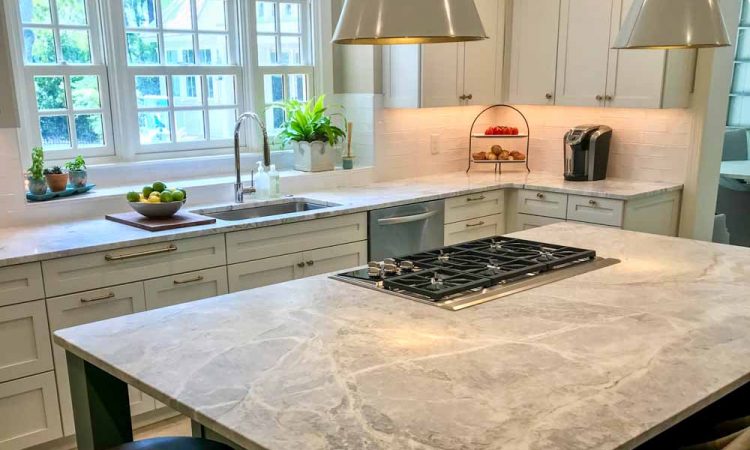
Marble Countertops 101
Within the world of countertops, it’s easy to get overwhelmed by the choices and trends. Granite and quartz are both talked about heavily, but another option worth looking into for your home’s kitchen or bathroom is marble countertops.
This particular stone forms when limestone heats and undergoes the process of metamorphism. Marble is called a “metamorphic rock,” which means that exposure to extreme heat creates the stone, much like granite. According to this article written by an expert, “The calcite in the limestone recrystallizes to form a rock that is a mass of interlocking calcite crystals.” Despite all the jargon, in the absolute barest-bones explanation: A rock gets very hot and marble is created. Almost like some really scientific magic!
What’s the Deal with Marble?
But what makes marble countertops so special?
1) An Affordable Option
Although the price ranges with marble, as it does with any stone, marble may actually be more affordable than granite and quartz, depending on your style and the size you need.
2) Simply Natural
Since marble is a natural stone, each piece is unique, from the veining and patterns to the overall color and look. In fact, MultiStone has over 50 options of marble to choice from!
3) It’s a Cool Stone…Literally
One of marble’s interesting characteristics is its ability to absorb heat and remain cool (although we still highly recommend using hot plates and other forms of protection against prolonged exposure to heat). Since it’s getting into the baking part of the year, pick out your family’s favorite holiday cookie recipe, clean the counter, and get to work, right on your marble countertop! The cooling nature of marble will prevent the butter from melting too quickly.
Marble Maintenance
Marble countertops come with a bit more maintenance because of their makeup; they’re both porous and soft, in comparison to other countertop options. However, this doesn’t mean that you should shy away from marble entirely!
- To combat marble’s porous nature: Make sure your countertop is sealed to prevent any moisture from absorbing into the stone. The only maintenance beyond the sealing process would be to routinely check the sealant—perhaps a few times a year. If water and oil no longer bead when (accidentally) spilled onto the countertop, then it’s time to reapply the sealant.
- To prevent scratches: Use cutting boards and hot plates.
- To clean: Use a soapy sponge regularly, and try to avoid “acidic or abrasive cleaners,” as it will eat away at the marble, as will vinegar, milk, and tomatoes (so use those cutting boards!).
- How to handle etching: Etching occurs when those acidic items or scratches in the surface of the marble actually change the composition of the stone itself. People usually opt for a honed or matte finish on their marble, which do a good job at disguising these effects of routine use of marble as a kitchen countertop.
The Bottom Line
The Greeks and Romans would sculpt massive figures and buildings out of marble. Nowadays, it’s still used in buildings as well as bathrooms and kitchens. Although marble is typically associated with a beautiful, creamy white look, there are actually hundreds of colors and patterns. So whatever your style, there’s a marble slab out there waiting to be your new countertop!
Interested? Let’s Get Started
Are you building a new house or renovating your kitchen and want to learn more about your marble countertop options? MultiStone has a wide number of styles and our countertop experts can help design and install the perfect countertop for your kitchen or bathroom.
